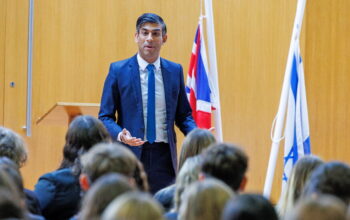
The New York Times’s “Ransom” project spoke directly to many Haitians, and not just because it offered an explanation for why daily life in their country is so often grueling.
The articles also appeared in Haitian Creole, along with English and French.
It was the first time a full article — much less a multipart series — in Haitian Creole had appeared on The Times’s website, and many Haitians responded to that alone over the weekend.
“The biggest service you could do for Haiti today is read this investigation,” one well-known journalist from Haiti, Nancy Roc, wrote on Twitter in Haitian Creole and French from her home in Montreal. “For the first time in its history, the newspaper published certain texts in Creole.”
The Times worked with a team of Haitian Creole translators based in North Miami. It was the most ambitious project the team had ever worked on, said their founder and president, Fedo Boyer.
For Haitians, the decision to offer Haitians the choice of reading in Haitian Creole sent an “extraordinarily powerful signal,” said Michel DeGraff, a professor of linguistics who is a co-founder of the Massachusetts Institute of Technology’s Haiti initiative and a founding member of the Akademi Kreyòl Ayisyen (Haitian Creole Academy). He is now in Haiti, working with educators.
Though Haitian Creole is Haiti’s national language — one of two official languages, along with French — many in the country still believe Haitian Creole is a lesser form of communication, Professor DeGraff said.
“When it comes to scientific conferences and prestigious forums, Haitians in Haiti tend to favor French (or even English) over Haitian Creole,” he said. “There is this widespread but mistaken notion that the language is not ready to do science or philosophy or any intellectual activity that includes complex concepts.”
This was not entirely an accident. Haitian Creole was suppressed, Professor DeGraff said, by “the forces that want to keep power and prestige for colonial powers and the upper classes.”
But, he said, Haitian Creole is vitally important because it is “spoken by all Haitians, while French is spoken by a tiny majority,” making the exclusion of Haitian Creole in spheres of official life a way of impoverishing a large percentage of the population.
“When The New York Times publishes in Haitian Creole, you are honoring all Haitians,” he said.
All four written articles and a timeline graphic in the series were translated by a team of three at the Miami translation company, CreoleTrans. Mr. Boyer, the company founder and president, said the project was the trickiest he had worked on in his 20 years as a professional translator because of the number of drafts before publication.
While working on the project, he said, he remembered his school days in Les Cayes, Haiti, when speaking Haitian Creole in class led to students’ being given a stick or stone to carry as a symbol of shame.
“This is why we do what we do” he said, “so others won’t have tell people: ‘They wrote a story about Haiti.’ They can read it themselves. And if they can’t read, someone can read it to them — in their own language.”


